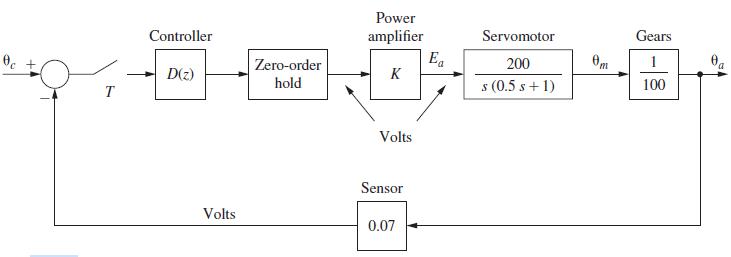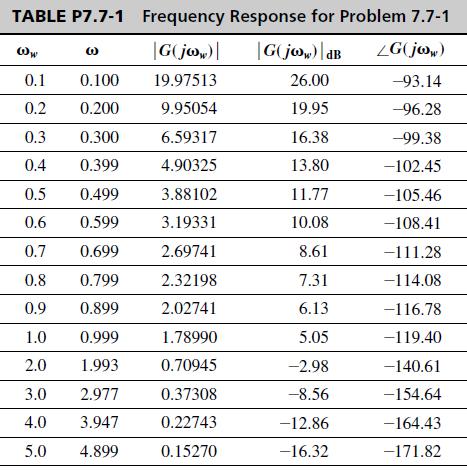For the robot arm joint control system of Problem 7.5-4 and Fig. P7.5-4, let K = 1
Question:
For the robot arm joint control system of Problem 7.5-4 and Fig. P7.5-4, let K = 1 .
(a) The frequency response for G(z) was calculated by computer and is given in Table P7.7-1.
Sketch the Nyquist diagram for the open-loop function G(z)Hk , with Hk = 0.07 ⇒ − 23.1 dB .
(b) Determine the stability of the system.
(c) If the system is stable, determine the gain and phase margins. If the system is unstable, find the value of K that gives a phase margin of 45° .
(d) From the Nyquist diagram, determine the value of K >0 for which the system is marginally stable.
(e) Use the frequency response to find the frequency ω at which the marginally stable system will oscillate.
Problem 7.5-4
Consider the robot arm joint control system of Fig. P7.5-4. This system is described in Problem 1.5-4. For
this problem, T = 0.1 s and D(z) = 1. It was shown in Problem 6-7 that 
(a) Write the closed-loop system characteristic equation.
(b) Use the Routh–Hurwitz criterion to determine the range of K for stability.
(c) Check the results of part (b) using the Jury test.
(d) Determine the location of all roots of the characteristic equation in both the w-plane and the z-plane for
the value of K 7 0 for which the system is marginally stable.
(e) Determine both the s-plane frequency and the w-plane frequency at which the system will oscillate
when marginally stable, using the results of part (d).
(f) Show that the frequencies in part (e) satisfy (7-10).
Table P7.7-1
Step by Step Answer:

Digital Control System Analysis And Design
ISBN: 9780132938310
4th Edition
Authors: Charles Phillips, H. Nagle, Aranya Chakrabortty





